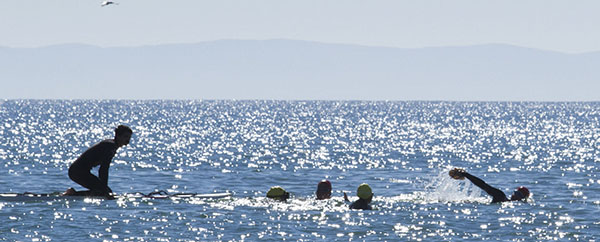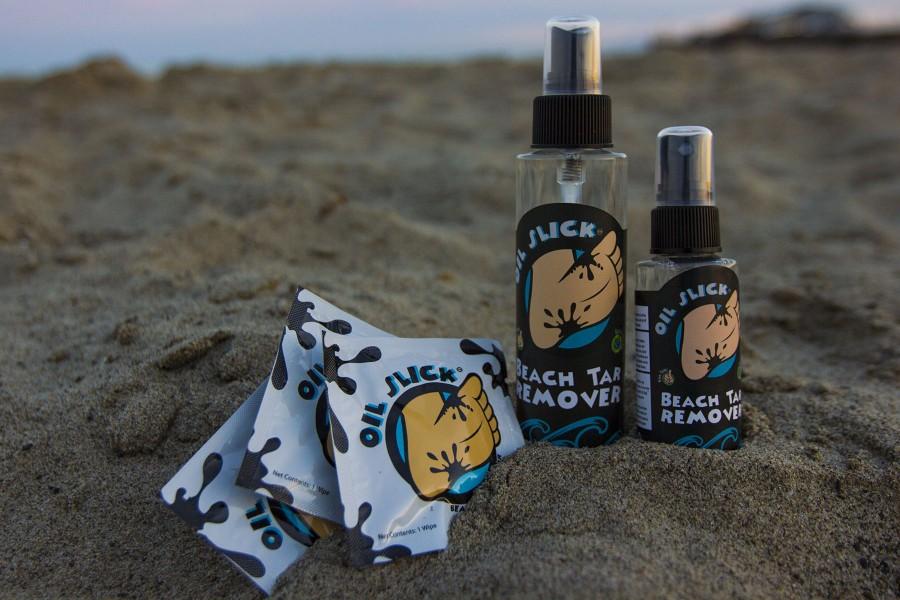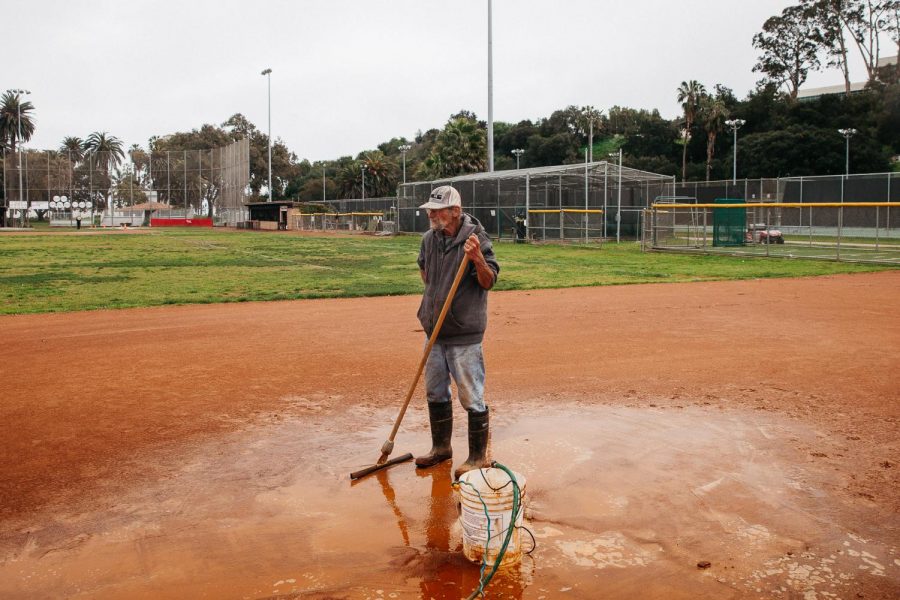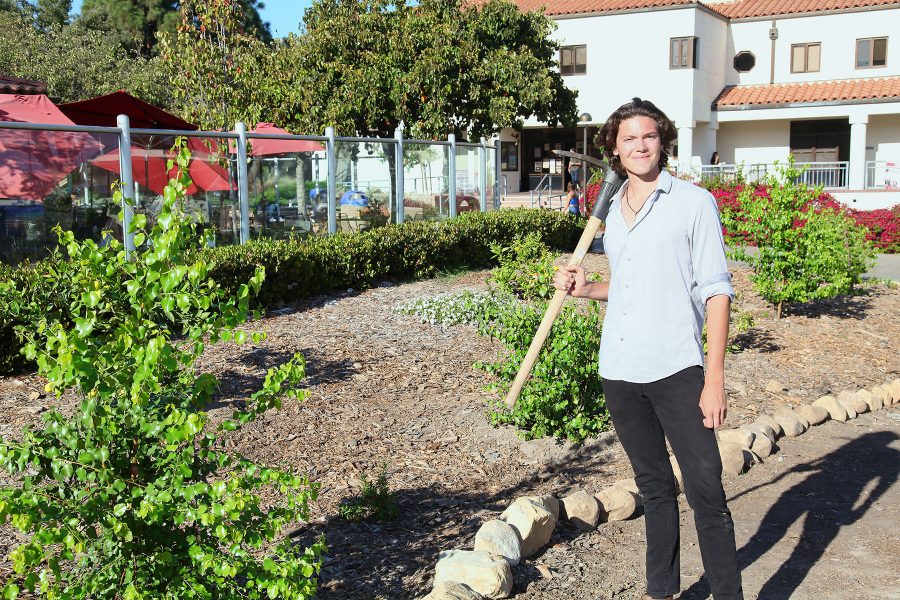City College is the only college in the area where students can swim in the cold Pacific Ocean and experience the marine environment in the local area of Santa Barbara as a transferable physical education class.
“It’s an unbelievable sport,” instructor Ingrid Schmitz said. “We have our own little community down here. There’s nothing like it.”
The ocean swimming class has been available at City College for eight years. Schmitz developed the idea because of her own passion for swimming in the ocean.
Schmitz began swimming in high school but became an avid swimmer in college, where she earned a Physical Education major. She swam several triathlons and competed in master’s meets. She has participated in long-distance swimming and races in the Channel Islands.
“Many people are afraid of the water and that’s why they should try it,” Schmitz said.
The one unit class is called Physical Education Ocean Swimming 220 and is only offered in the fall semester. It is located at Leadbetter Beach, across the road from the City College campus. The swimmers meet for two hours on Tuesday and Thursday.
Schmitz said Santa Barbara has a beautiful ocean that is accessible to everybody.
To be enrolled in the class, students must have previous swimming experience. They are required to pass an assessment and must successfully swim 100 meters.
“It’s not about how fast you swim but if you actually can swim,” Schmitz said. “It’s not smart to start in the ocean if you’re not used to swimming. There’s a big difference from swimming in pool.”
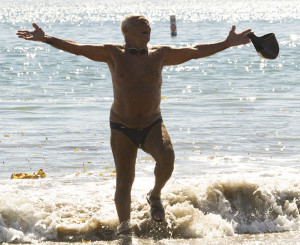
In the ocean there are no walls or lines to follow like swimmers are used to. The students have to deal with wind, waves and different water conditions in a changing environment. When the water is cold the students wear wetsuits.
“It’s a really fun class,” said Carmalisa Reichhart, City College student in PE 220. “Everybody turns into a family.”
Reichhart said the best part is the feeling of connecting with nature.
Schmitz also teaches beginning and intermediate swimming at Los Baños pool for students who are not ready for the ocean.
The class offers different themes and topics. It can be everything from safety skills, such as how to treat jellyfish stings, to breathing and controlling the mind.
The swimming strokes Schmitz applies in class is primarily freestyle but backstroke and breaststroke are also taught.
“Last week we had the ‘adventure mental swim’ where we swam way out, of course accompanied by the lifeguard,” Schmitz said. “Last Thursday we discussed how swimming could be a form of moving meditation.
“We swam for distance, focused on our breathing and were to remain silent with the exception of safety issues and questions.”
The students also get to experience interval swims and rescue techniques during the semester.
According to Schmitz, it’s important to mix it up to keep students interested while at the same time trying to push and increase their distance and get faster.
Throughout the semester the students get to swim four different 1,000 meter swims. The first one is in the beginning of the semester and the second and third ones on the same day, one month later. The last 1,000 meter swim is in the last week of the class.
Schmitz said the goal is to swim faster each time. Some students have shortened their time by more than 10 minutes.
At the end of the semester, the students get a final exam based on all the information they have been given.
One important aspect of the class is safety. The students use a buddy-system and pair up in two’s, they have to sign in and out of class. They also have lifeguards watching and every day they evaluate and check the water and weather conditions, Schmitz added.
“It’s a pretty safe beach,” Schmitz said, “But if there are huge swells or too thick fog we stay out of the water. Also if they are warning about white sharks, we stay out of the water for 72 hours.”


